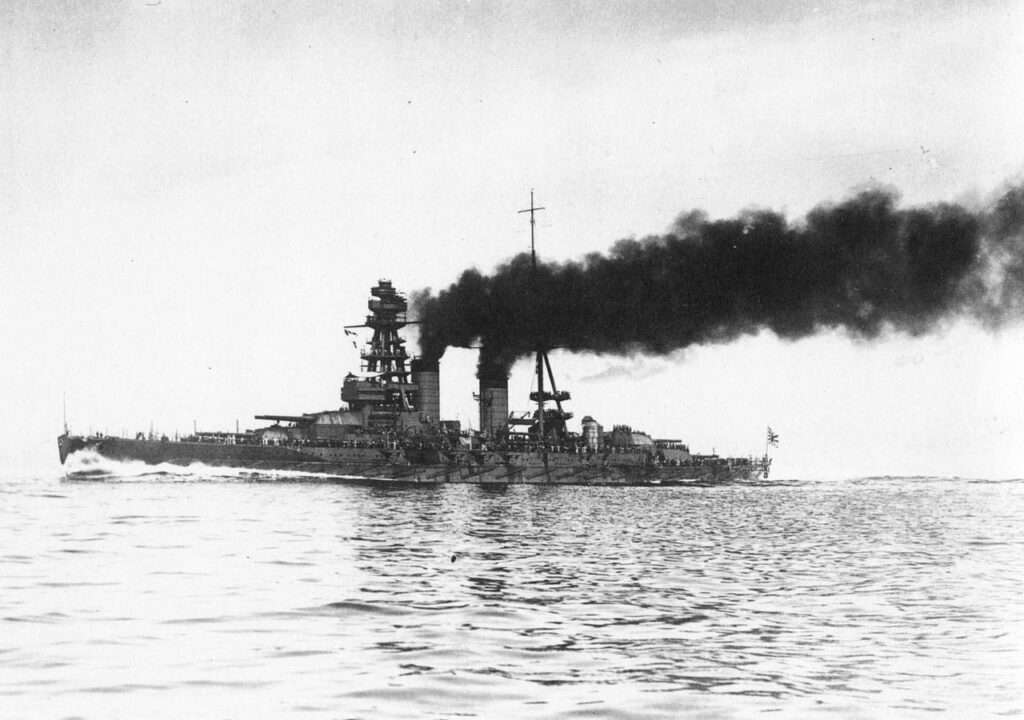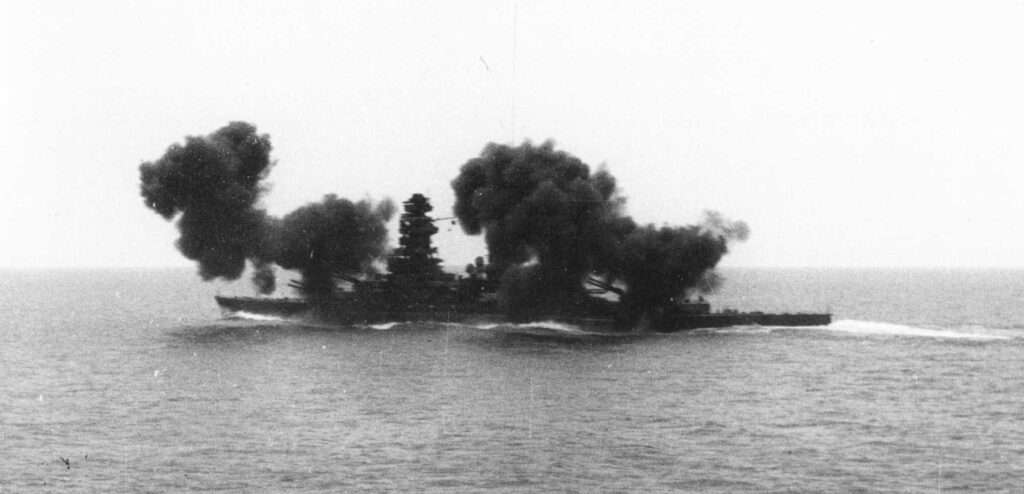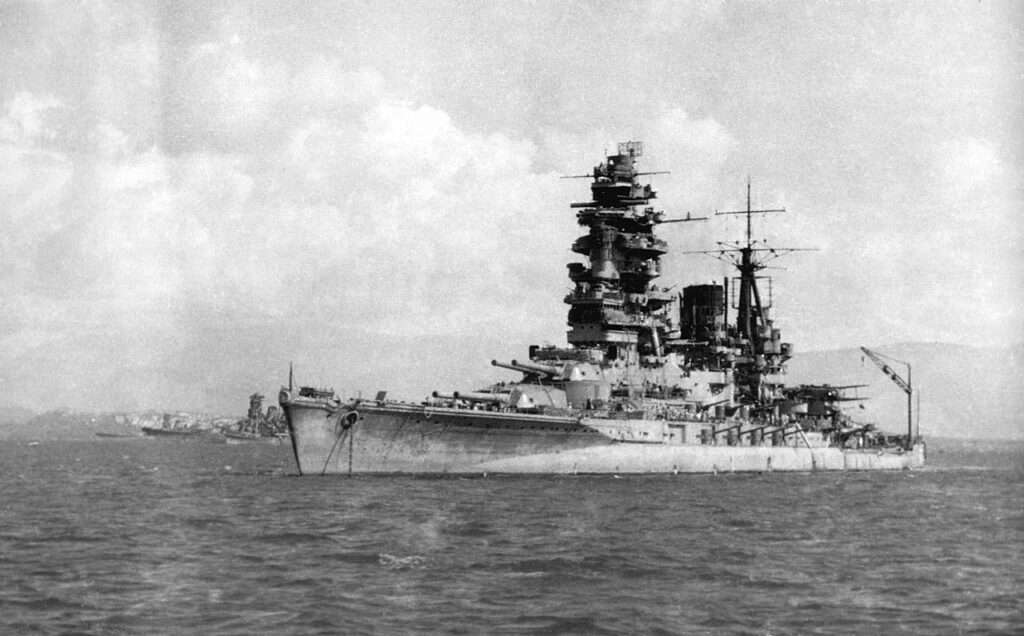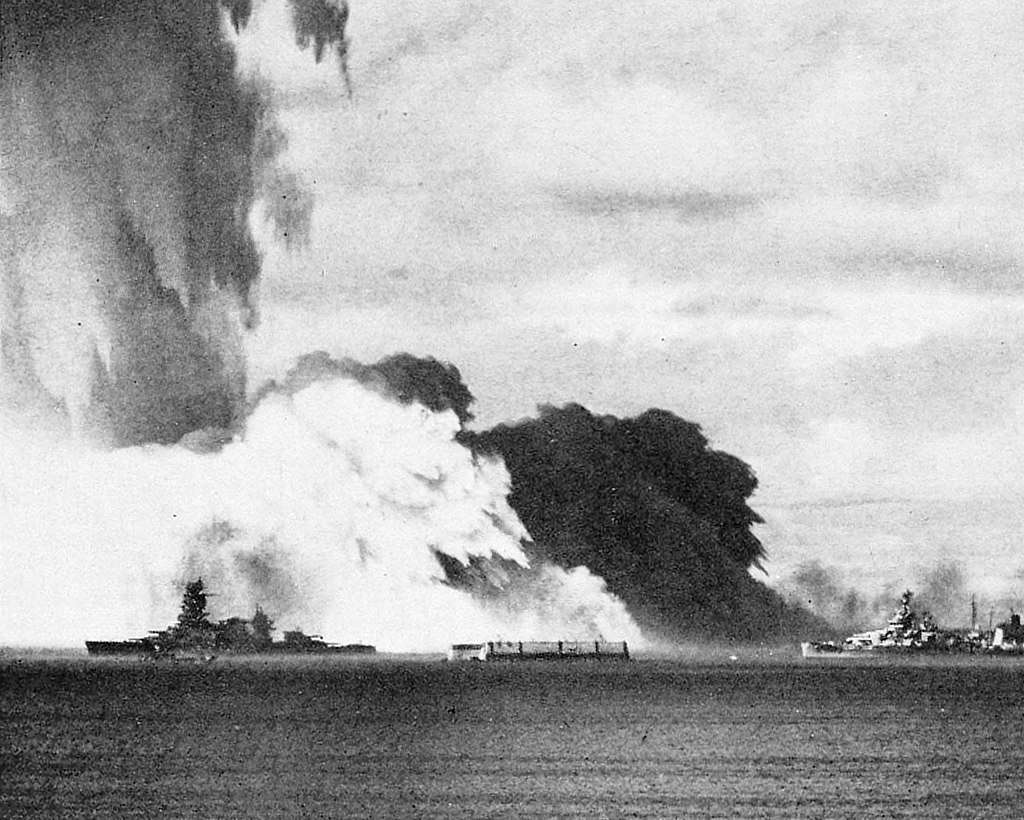The Japanese battleship Nagato was a super-dreadnought battleship that was commissioned in 1920 and served as the flagship for Admiral Isoroku Yamamoto during the attack on Pearl Harbor in 1941.
As one of the most heavily armed ships in the Japanese fleet during its time, Nagato was equipped with eight 16.1-inch guns and was involved in various naval engagements throughout World War II.
After surviving the war, Nagato was used as a target ship for nuclear testing at Bikini Atoll during Operation Crossroads in 1946, where she was sunk and now remains.
Contents
Design
Construction Of The Nagato
Operational History
Legacy of The Nagato
Design
The Nagato was at the forefront of battleship design when it was conceptualised in 1916. As a primary component of the eight-eight fleet strategy, the Nagato was specifically designed to counter the United States’ naval prowess.
The Nagato-class battleship was often regarded as a symbol of Japan’s expanding naval might during the early 20th century.
One of the distinguishing features of the Nagato was its main battery of eight 16.1-inch guns in four twin turrets. These guns were the largest to be mounted on a battleship at that time, surpassing even Britain’s revered Queen Elizabeth-class battleships.
Another notable point about Nagato’s design was its turbine engines. It was equipped with Gihon steam turbines, which were preferred over the more traditional reciprocating engines due to their balance of speed, power, and fuel efficiency.
 Nagato on sea trials, 30 September 1920.
Nagato on sea trials, 30 September 1920.
Specifications-wise, the Nagato boasted a length of 215.8 meters with a beam of 29.02 meters and draft of 9.08 meters. Displacing at roughly 32,720 long tons at normal load and up to 39,116 long tons at full load, it was a heavyweight in its class.
Its propulsion system was combined with 21 boilers producing 80,000 horsepower, making Nagato capable of reaching speeds up to 26.5 knots.
The ship’s protection scheme was also extensive. Its belt armor was 12 inches thick, while turret armor was as thick as 14 inches. Meanwhile, the deck varied between 3.5-5 inches in thickness. Such staggering defense capability made her an exceptionally tough nut to crack in combat.
Construction Of The Nagato
The design choices behind the Nagato were rooted in Japan’s geopolitical calculation. To establish itself as a dominant sea power in the Pacific, Japan needed a battleship that was able to hold its own against any potential adversary, particularly the United States and Britain.
Read More Operation Cerberus – The Channel Dash
The admiralty hence stipulated that the Nagato would be bigger, more heavily armed, and faster than any existing battleship class. This resulted in an extremely powerful, capable, and frankly intimidating battleship that embodied the Japanese navy’s uncompromising pursuit of dominance at sea.
Despite the sophisticated design, constructing the Nagato was not without its difficulties. The decision to go with 16.1-inch guns caused substantial engineering challenges. The size and weight of the guns required significant reinforcement and remodeling of the ship’s deck and turret structures.
Additionally, integrating the extensive armor and intricate propulsion system called for delicate planning and coordination. The procurement of materials was another hurdle—it necessitated Japan’s entire industrial capacity and even then, frequently fell short.
 Nagato firing her main armaments, 1936.
Nagato firing her main armaments, 1936.
Nevertheless, despite all these challenges, she was completed in 1920 after four years of construction, marking a significant milestone in Japan’s naval history.
After its initial commissioning, the Nagato received several upgrades over the years. These enhancements included added anti-aircraft weaponry, the installation of radar systems, and further bolstering of the ship’s armor.
The last significant overhaul of the Nagato took place on the brink of World War II in 1936, incorporating the bulging of the hull for improved stability and the addition of extra anti-aircraft guns. Significantly, the Nagato was the sole Japanese battleship to endure throughout the entirety of World War II.
Operational History
Built and launched during the 1910s and 20s, Nagato assumed the position as the Japanese battle fleet’s flagship during the initial stages of World War II.
Though it didn’t participate directly in the notorious Pearl Harbor attack in December 1941, it played a crucial role. Moored in Japan, the Nagato transmitted the coded order, “Climb Mount Niitaka,” which signaled the onset of the attack.
Read More The Battle of Wake Island – A Defiant Stand in the Pacific Theater
Battle of Midway
Nagato did not see active engagement until the Battle of Midway in June 1942. As part of Admiral Yamamoto’s main fleet, Nagato aimed to secure control of the Pacific.
However, the Japanese suffered devastating losses, marking a crucial turning point in the war. Nagato, however, escaped without damage and continued to be an active symbol of Japanese naval might.
Battle of Leyte Gulf
In 1944, the Japanese High Command decided to deploy the battleship in a crucial role in the Battle of Leyte Gulf, known as the largest naval battle of World War II.
As part of the “Center Force,” Nagato and other battleships attempted to engage American carriers in the Sibuyan Sea. Still, American submarines and aircraft impeded their advance, forcing them to retreat.
 Nagato anchored in Brunei Bay, bshortly before the Battle Of Leyte Gulf, October 1944.
Nagato anchored in Brunei Bay, bshortly before the Battle Of Leyte Gulf, October 1944.
The failure to destroy American carriers was a significant factor in the Japanese loss at Leyte Gulf, restricting their ability to control the vital sea and air routes.
Final Operations and Impact
Despite sustaining significant damage during the Battle of Leyte Gulf, Nagato continued to play a role in the subsequent warfare. The vessel was one of the ships designated to be part of “Operation Ten-Go”, a last-ditch attempt by the desperate Japanese to halt the American advances.
While the Nagato was considered old and obsolete compared to newer U.S. and Japanese warships, its presence still symbolized the resilience of the Japanese fleet, and the ship participated in the final stages of the war.
Legacy Of The Nagato
After Japan surrendered in August 1945 ending World War II, plans were made to convert the battleship Nagato into a repatriation vessel. It would have transported Japanese soldiers and civilians from various parts of the world back to Japan.
However, upon close inspection by U.S. forces, the ship was deemed unfit for such a role due to its poor condition.
Read More SS Baychimo – The Arctic Ghost Ship
Nagato was officially decommissioned by the Japanese Navy on October 5, 1945 and remained docked within Tokyo Bay under U.S. surveillance. It wasn’t until February the following year, that it was decided to use the Nagato in the upcoming nuclear weapon tests, known as Operation Crossroads.
 Nagato (left) during the Baker detonation.
Nagato (left) during the Baker detonation.
Operation Crossroads was a series of nuclear tests conducted by the United States at Bikini Atoll in the Marshall Islands in July 1946.
These tests were designed to study the impact of nuclear blasts on naval vessels. Nagato was among the 95 ships chosen for the tests due to its historical significance and the fact it was one of the few large Japanese ships to survive the war.
Read More Operation Crossroads – What Do Nuclear Weapons Do To A Naval Fleet?
The battleship survived the first test, codenamed Able, which was an airburst detonation, only suffering light damage. However, it was not so lucky during the second test, codenamed Baker, a sub-surface detonation, on July 25, sinking a few days later on July 29.
The Nagato now rests upside down in Bikini Atoll’s lagoon, approximately 110 feet beneath the surface. Its final resting site is considered as a shipwreck and is sometimes visited by divers, albeit it is technically U.S. government property.